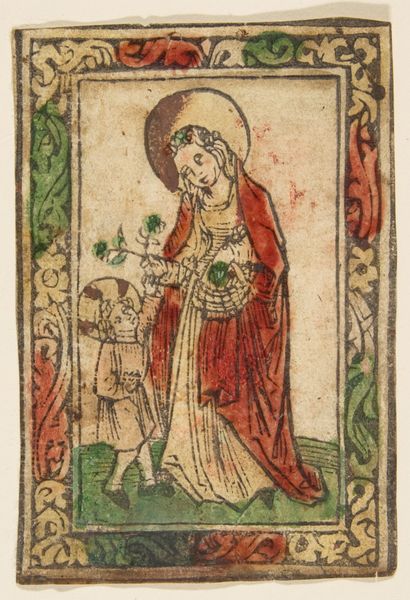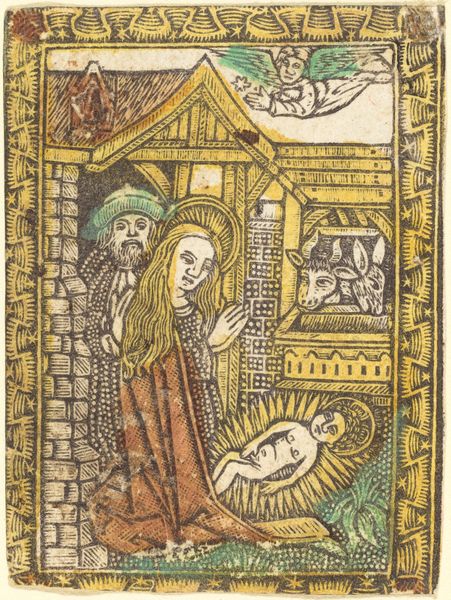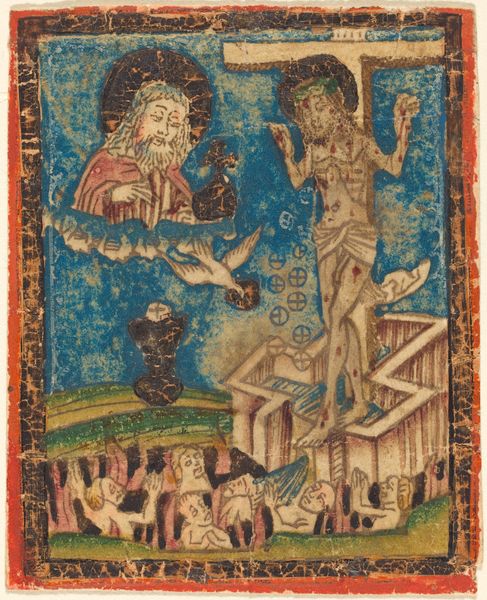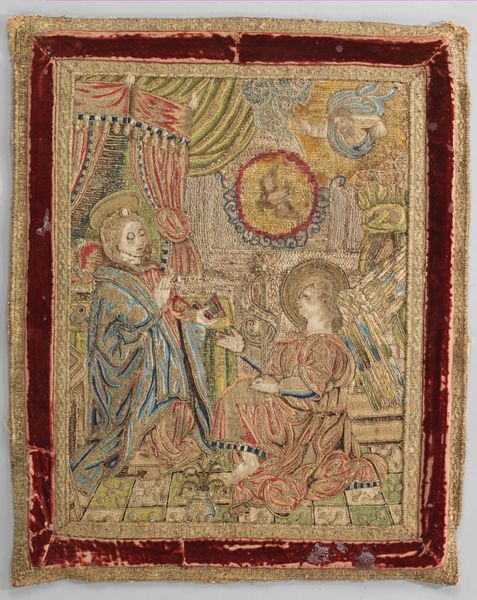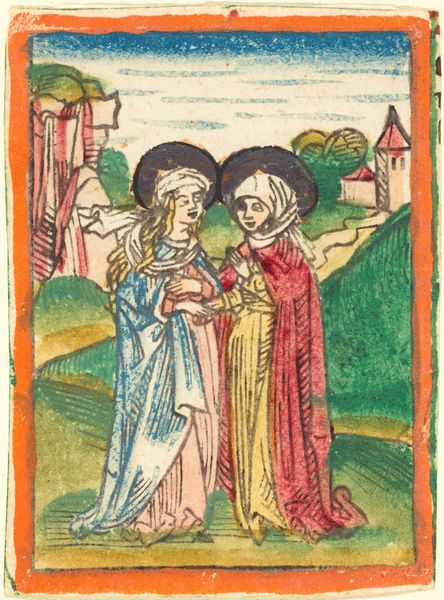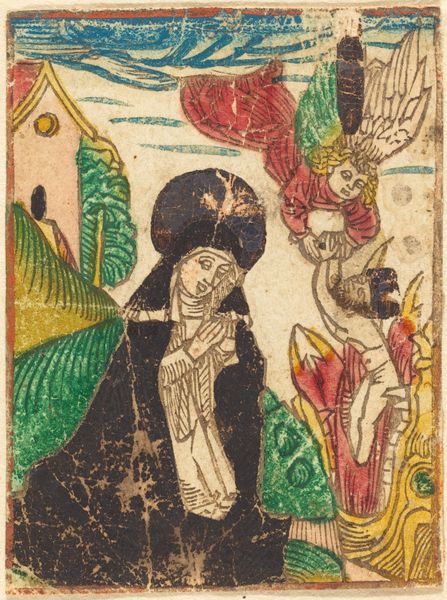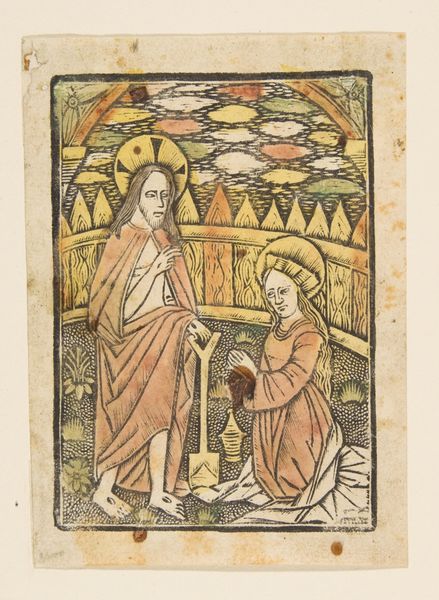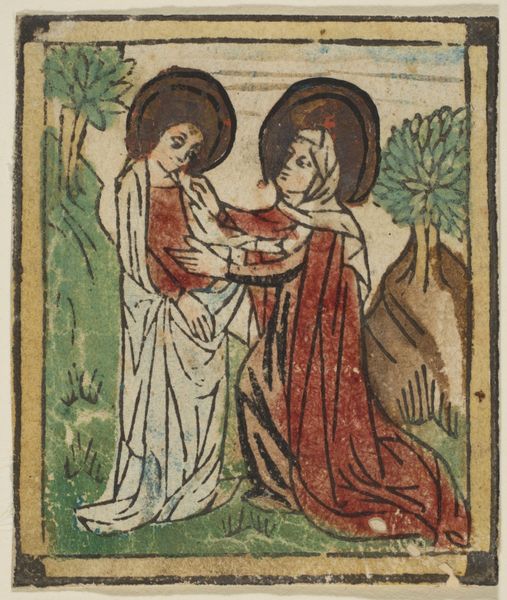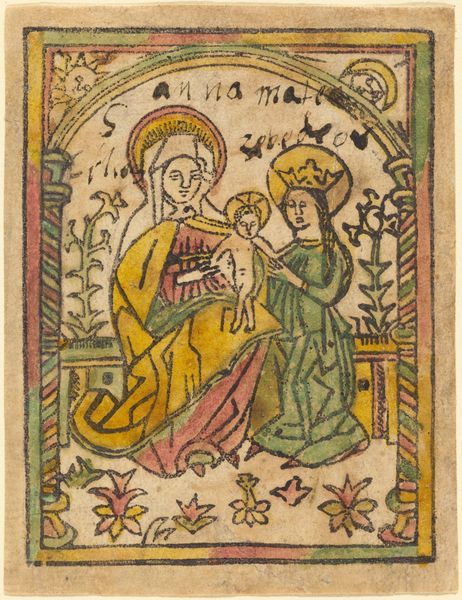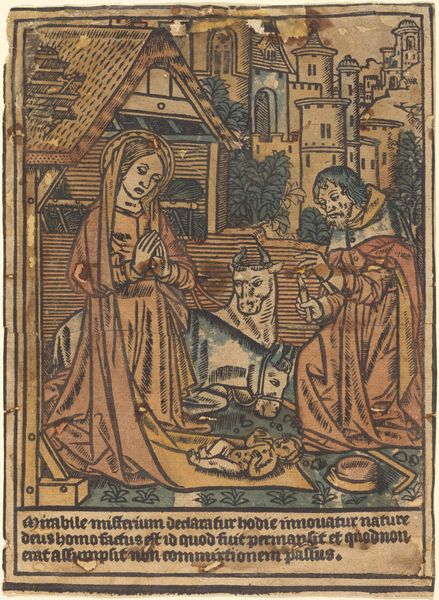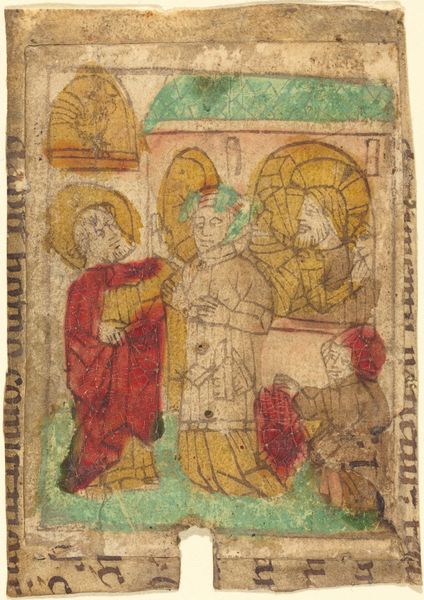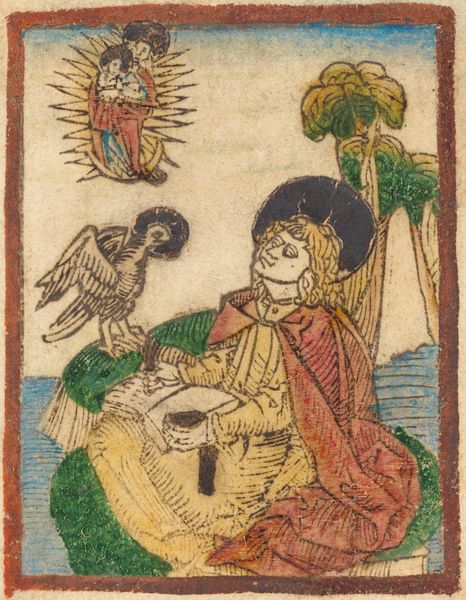
tempera, print, watercolor
#
medieval
#
water colours
#
allegory
#
tempera
# print
#
gothic
#
figuration
#
watercolor
#
coloured pencil
#
miniature
#
watercolor
Copyright: National Gallery of Art: CC0 1.0
Curator: Here we have what’s known as "Allegory of the Eucharist," created sometime between 1470 and 1490. This piece, likely produced as a print, employs tempera and watercolor, creating a miniature scene filled with symbolism. Editor: My immediate impression is one of stark contrast, a strangely ethereal, almost crude juxtaposition. The colors, while faded, are quite striking given their application. There's a pronounced linear quality too. Curator: The linear quality likely comes from its genesis as a print, where the pressure and carving of the block would emphasize such elements. The materials, humble as they may seem—tempera and watercolor—speak volumes about access and artistic intent. Who was producing this? For whom? What labor did it entail? Editor: Undoubtedly important considerations, yet one cannot ignore how the artist chose to employ them. The symmetry is deliberately unbalanced, unsettling even. Christ is depicted almost…vulnerable on the left, mirroring Mary on the right in pose, yet she is clothed, dignified. Is this imbalance the point, highlighting a perceived flaw, an asymmetry in religious thought? Curator: Or consider the recipients of this imagery; their understanding would depend entirely on access to education, spiritual teaching and wealth, altering their reception drastically. It could be didactic. How do the production costs affect this interpretation of devotion for instance? Editor: An astute point regarding reception and production. Still, let us dwell on composition for a moment more. Above Christ and Mary, God is…contained, almost an afterthought above a bizarre rendition of what must be a Eucharistic wellspring of sorts? And what of the ambiguous shapes drifting in the background and what narrative is suggested here? Curator: Let us not neglect the socio-historical factors in iconographic construction, these can illuminate a network of religious ideas embedded within specific materials that become powerful symbols accessible through the very mechanisms that shape daily lived realities for people during that period. It moves it beyond stylistic evaluation into the realm of understanding its complete integration into societal needs. Editor: Fair enough. And thinking of the dialogue between aesthetic merit and broader significance. Thank you for guiding this enriching analysis through these multifaceted lenses; seeing this miniature has expanded our insights. Curator: Indeed. It serves as a wonderful case study, merging formal reading with that of our Materialist interpretation.
Comments
No comments
Be the first to comment and join the conversation on the ultimate creative platform.
